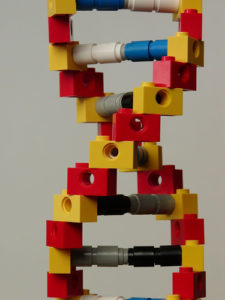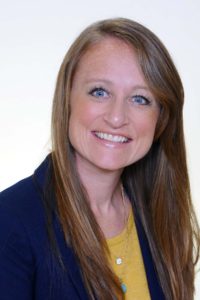 I attended Diahan Southard’s series of DNA lectures on July 28 as part of the St. Louis Genealogical Society’s Summer Speaker Series. As I mentioned in a blog post last month, I’ve had a hard time using DNA in my genealogical research, mostly because I have a difficult time understanding and retaining what I try to learn about DNA.
I attended Diahan Southard’s series of DNA lectures on July 28 as part of the St. Louis Genealogical Society’s Summer Speaker Series. As I mentioned in a blog post last month, I’ve had a hard time using DNA in my genealogical research, mostly because I have a difficult time understanding and retaining what I try to learn about DNA.
Diahan is an expert on making this information understandable to non-scientists like me. I’ve heard her speak before but this time, a door in my brain cracked open. It may have been because at the seminar we had the privilege of listening to Diahan for four straight lectures, each of which built on the prior one. It was really a brilliant program and Diahan is an excellent speaker.
So I came home and started applying what I’ve learned and I now feel that genetic genealogy is part of my tool box. Hooray!!
Here are some of the revelations from her talks that really helped me:
- A DNA match with a person whose tree has no familiar surnames is cause for celebration, not frustration. The DNA shows you’re related. When you figure out how you’re related, you’ll add names to your tree.
- The Shared Centimorgan (cM) Project can help you understand how you might be related to someone, based on how much DNA you share. Here’s Diahan’s explanation of centimorgans and the Shared cM Project. It’s a great resource.
- The solution to most DNA is quandaries is (drum roll): Do genealogy! DNA evidence can bridge gaps or open holes in brick walls. But traditional genealogy is how you build your family tree.
- Create a list of your 32 great great great grandparents’ surnames to help you find commonalities with DNA matches. I had not compiled a list like that before and I see how it will help recognize how I might be related to those DNA matches that are fourth cousins or closer.
- On Ancestry, even if a DNA match has not linked a tree to his/her DNA results (so you see “no family tree”), click on the “View Match” button and see if there’s a drop-down list of trees you might look at under the Pedigrees and Surnames tab. There may be a tree (or a few trees) for you to look at.
One thing I noticed when I took a look my Ancestry DNA results the day after the Diahan’s seminar is that the shared centimorgans don’t necessarily accurately reflect the relationship. For example, my mother’s first cousin, whom I know personally, shares only 183 cM with me, rather than the 439 that first cousins once removed usually share, according to the Shared cM Project. So Ancestry guessed that she was my third or fourth cousin. The Shared cM Project is a great tool, but obviously just a guideline.
Today in my research session, I explored the public tree linked to someone with whom I share 158 cM. This is a huge tree but I was able to easily focus in on a shared surname. The tree is beautifully sourced, so even though I had only a few minutes left of my 30-minute research session this morning, I was able to add a fact and supporting document to my great great grandfather’s record in my family tree software. Tomorrow I’ll go back and explore that tree more.
I finally understand how DNA can help me in my genealogy research. Better yet, I understand how to use it. This is such a revelation.
If using genetic genealogy eludes you as it did me, I heartily encourage you to check out Diahan’s website, Your DNA Guide, and to listen to Diahan speak when you have the chance. She’s speaking at the Federation of Genealogical Societies conference later this month and I know she’ll be speaking at the 2019 NGS conference in St. Charles, Missouri, next May. (I’ll plan to be in the front row!) You can also do a consultation with her where she explains your DNA results to you. She’s a terrific resource.
Unmodified photo by Michael Knowles via Flickr. Used under Creative Commons License.

 How They Do It: Diahan Southard
How They Do It: Diahan Southard